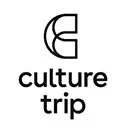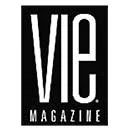Cordoba Guide
Our Guide To Cordoba
In 9th and 10th century Cordoba “art, literature and science prospered as they then prospered nowhere else in Europe…” Stanley Lane-Poole
Quiet and thoughtful with a dash of melancholy, Cordoba sits proudly on the banks of the Guadalquivir river. Described as “solitary and far away” by the poet Federico García Lorca, this medieval city, known as The Ornament of the World, enjoys recognition by UNESCO that places high value on its glittering Islamic and Jewish heritage, colourful Patio Festival, magnificent Great Mosque-Cathedral and celebrated cuisine. Stepping into the Old Town is akin to winding back the clock a thousand years; a hidden world awaits. TOMA & COE hold the keys to unlock the city’s glorious past and present.
Accommodation
A Handful of the Most Inviting Boutique Hotels in Cordoba
Balcón de Córdoba
This peaceful and beautifully appointed hotel represents the ultimate in boutique accommodation. The communal spaces ooze understated style and the rooms boast comfort and elegance. Its name derives from the terrace that crowns the building and affords spectacular views over the Mezquita’s rooftops. Awards have been granted for its service, staff and chic touches. We include this hotel in our Extended and Classic Tours and it remains a firm favourite with TOMA clients. The Royal Suite has an impressive Mudejar ceiling in the living area and a private terrace to while away the lazy hours.
Address: Calle Encarnación, 8, 14003 Cordoba; 957 49 84 78

Palacio de Baílio
On a grander scale, this hotel resides in a converted 16th-century palace. Its wide hallways and sweeping staircases, cleverly brought into the 21st century with striking interiors, create an atmosphere of grandeur whilst the rooms and little niches and seating spaces offer intimacy and peace. The suites of the hotel are individually designed and are worth the price tag. For us, the ultimate attractions are the pool, the unique spa and treatment centre and an original roman mosaic, ingeniously exposed through a glass floor in their superb restaurant.
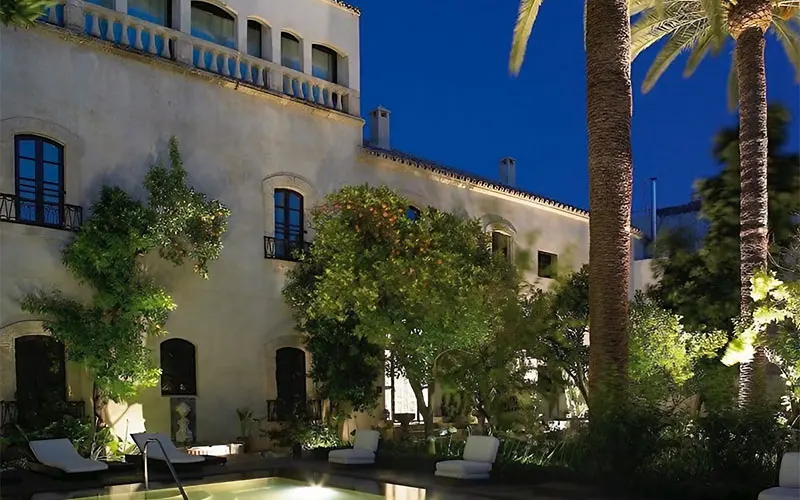
Casas de la Judería
This classical hotel, tastefully converted from a typical palacio Cordobés offers comfort, style and impeccable service. The style is very Andalucian and the workmanship of the features is second to none. Many guests comment on its unique atmosphere. Tucked away in the former Jewish Quarter, between the Mezquita and the river, this property is a world unto itself with several patios, wonderful exterior spaces and a pool to rival all others in the city (and open all year). Some of the superior rooms have terraces overlooking the Old Town.
Address: Calle Tomás Conde, 10, 14004 Cordoba; 957 20 20 95
Posada de Vallina
This unique property used to be home to the artisans who were working on the Great Mosque; some even say Christopher Columbus stayed here when he came to Cordoba to entreat the help of the Catholic Monarchs for his mission. With the atmosphere of an ancient coach house, the rooms here offer total seclusion and quiet, yet the hotel is just a stone’s throw from the hustle and bustle of the main Cordoba sightseeing hub.
Address: Calle del Corregidor Luis de la Cerda, 83, 14003 Cordoba; 957 49 87 50
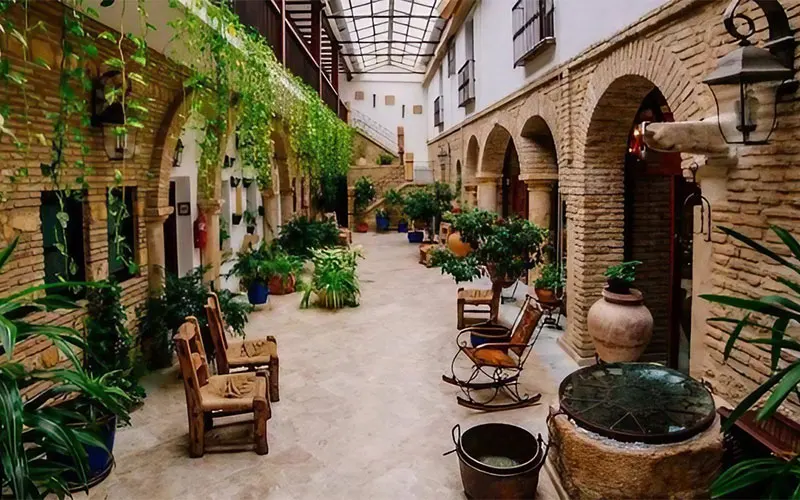
Casa de los Azulejos
Our tip for an equally charming stay on a lesser budget is this gorgeous little boutique hotel tucked away on a lovely street in the old town. The superior rooms are much larger and occupy the former salons of the “noble” or first floor. The style is typically Andalucian and the interior patio is brimming with foliage all year round. In fact, this patio has been entered into the annual Patio Festival Competition several times. Its name comes from the tiles that decorate the walls and floors of this 17th-century colonial building; some of them are original from the prestigious Mensaque factory in Seville.
Address: Calle Fernando Colón, 5, 14002 Cordoba; 957 47 00 00
Restaurants
Our Favourite Places to Eat in Cordoba
Taverna Pepe de la Judería
This Cordoban classic is full of local character and flair. Spanning three floors, there are plenty of unique spaces for a superb dining experience and if the weather allows, the roof terrace has superb views of the cathedral’s clock tower. Their competent and friendly staff serve traditional dishes with a creative twist. Their berenjenas or lightly fried aubergine drizzled with molasses are among the best we’ve tasted and the lamb is superb. Desserts are also surprisingly varied and delicious. Toma clients are always made to feel very welcome at this restaurant that never disappoints.
Address: Calle del Romero, 1, 14003 Cordoba; 957 20 07 44
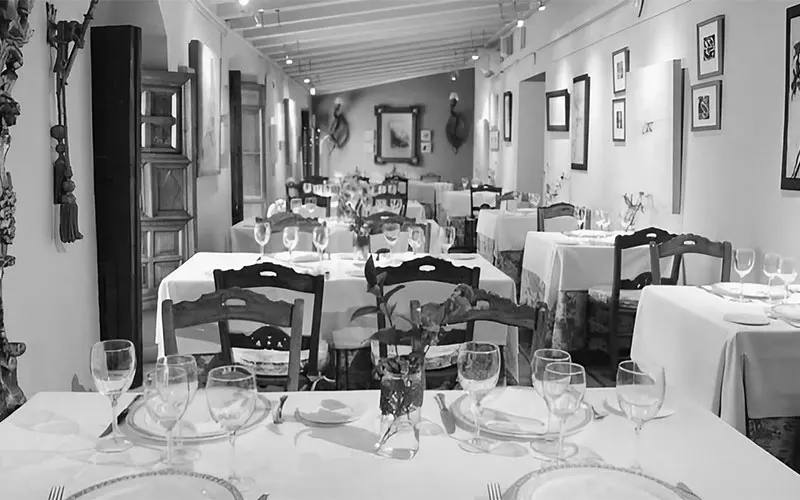
El Churrasco
Another stalwart establishment that is popular with locals and visitors alike. Known for their chargrilled meats, they use the wood of the encina or the holm oak that gives the meat a distinct flavour and smell that emanates from the door as you walk past. Their most popular dishes are rabo de toro and salmorejo, two Cordoban staples. There are several private dining rooms for an more intimate occasion and their private art collection, that adorns the walls is almost as impressive as the wine list.
Address: Calle Romero, 16, 14003 Cordoba; 957 29 08 19

Almudaina
Settings do not get any grander than this 16th-century palace built by an uncle of the Emperor Carlos V. The sumptuous interior courtyard is a divine space to contemplate and with such a privileged ambiance, it’s comforting to know that the food is consistently up to par. Their grilled artichokes hearts are worth writing home about and with plenty of signature fish and meat dishes their a la carte menu is sure to please every palate. Ah, and leave room for the desserts as they are much more than just an afterthought. A must for foodie tours.
Address: Plaza Campo Santo de los Mártires,1 14004 Cordoba; 957 47 43 42
Bodegas Campos
This place is a world unto its own. A traditional meeting place of like-minded people and a place to share and develop friendships, it feels almost like a private club. The distinct dining areas have been themed with quirky titles and interesting memorabilia. You can have dinner in the library or lunch in the office. Distinguished guests from past and present have left their signatures on the old 600 litre barrels used for the wine production in the wine region of Montilla-Moriles. Competent staff, rightly proud of their working environment serve up dishes of delight that span the realm of all things Andalucian and beyond. Standouts include their mouth-wateringly good Jamón Ibérico and their pork ribs. Unusually, they are not afraid of vegetables and each dish comes with a healthy assortment.
Address: Calle Lineros, 32, 14002 Córdoba; 957 49 75 00
El Choto
Many Toma clients have whiled away the afternoon in this delightful restaurant, in a quiet street just a short walk from the Mezquita. They have a tiny patio garden at the front with a trickling fountain that always seems a congenial accompaniment to a tasty meal. Famous for their Choto Al Ajillo or Garlic Kid Goat, their menu spans the ample spectrum of Andalucian cuisine. Jamón Ibérico cut from the bone served with cured goat’s cheese are a good way to begin and if goat is not to your liking, then their fish dishes are excellent as are their Iberian pork plates. The waiters offer friendly service and have a knack of making guests feel at home and their food and wine is divine.
Address: Calle de Almanzor, 10, 14003 Córdoba; 957 76 01 15

Tapas Bars
Our Favourite Tapas Bars
La Flamenka
An idea between two young friends, both with a passion for food and service, ended in the creation of Flamenka and it soon became a celebrated addition to the tapas scene in Cordoba. Their creative dishes have to be tasted to be appreciated, as some of their concoctions sound almost startling on the page. The chef has a deft hand at balancing flavours and creating satisfying dishes that delight both the vista and the palette. Their ‘carbon cod’, looks like a lump of coal but is among the most delicious things we have ever tasted. Great food, great fun and great prices.
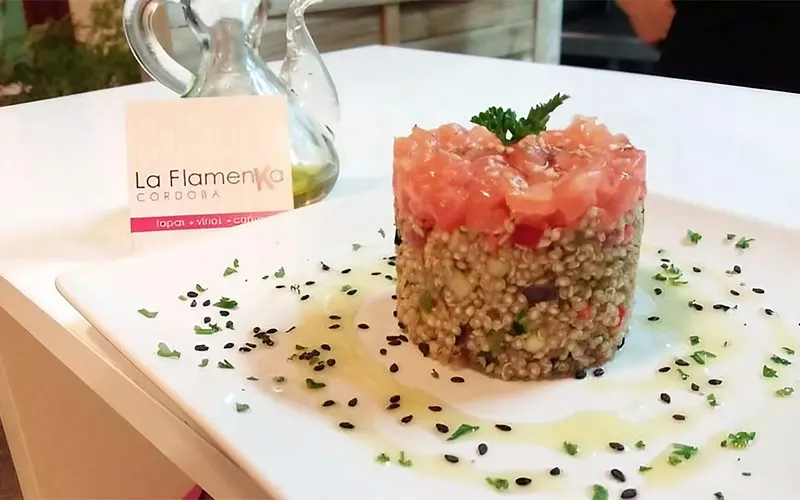
Taberna La Viuda
Housed in an old tavern, this restaurant appeals to all the senses. Full of local colour and fauna, it resides in the San Basilio district famous for its patios and courtyards that feature every year in the Patio Festival. The more than 20 dishes can be ordered as a tapa or as a “ración” for sharing. Creativity abounds in the dishes that are inspired by local cuisine but burst with homemade, hearty flavours. One leaves this place with a head full of memories and a very satisfied palette. Try their croquetas de jamón y caldo (croquettes of Iberian Ham and broth) or their bacalao frito con pisto (fried cod with ratatouille).
Address: Calle San Basilio, 52, 14004 Córdoba; 957 29 69 05
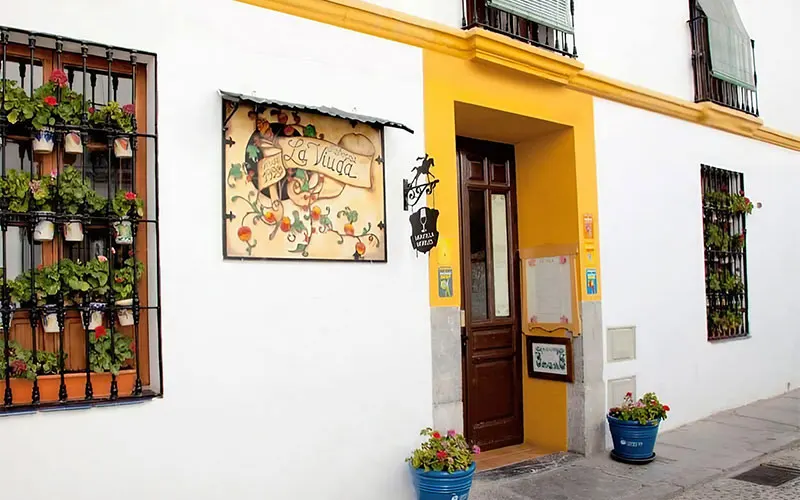
Juan Peña
Very popular with locals, this authentic tavern-style restaurant, with bulls’ heads and photos of famous bullfighters and flamenco artists on the walls, serves huge portions of everything Andalucian; cheeses, hams, fish, seafood, oxtail, salmorejo, pork dishes and much, much more. Refined dining it ain’t, but if you want to eat like the locals WITH the locals then this is your place. Service can be a little gruff so walk in like a bullfighter and work your charm on the waiters. They will expect no less. You can wash down your food with a stiff drink and some of the strongest coffee in town.
Address: Av. Dr. Fleming, 1,14004 Cordoba; 957 20 07 02
El Pisto
History and tradition ooze out of this little 19th-century tavern that represents all things Andalucian. It used to be a popular haunt with the bullfighting fraternity and stars of yesteryear frequented it to enjoy the delicious soups, stews and other hearty local dishes. It’s quite timeless in atmosphere and you feel like characters from an Andalucian Picaresque novel might appear in the doorway. Their pork cheeks are second to none and people walk across the city for a taste of their Salmorejo – the best in the land!
Address: Plaza de San Miguel, 1, 14001 Cordoba; 957 47 01 66
Taberna Santos
Famous for its delicious tortilla of gigantic proportions, locals have long asked for a slice of tortilla and a caña (small beer) and then crossed the street to perch on the low wall that surrounds the Mezquita to enjoy the moment. This has also become a Toma tradition for guests that we take to Cordoba. Not only is the tortilla very photogenic, it’s also deliciously creamy and goes down very nicely indeed with a fino or a dry sherry. If you simply need a “pick me up” before visiting the former Mosque, then their coffee is great and very reasonable.
Address: Calle Magistral González Francés, 3, 14003 Cordoba; 957 48 89 75
Things To Do
Our Pick of Unmissable Cordoba Attractions
Mezquita
The Mezquita-Cathedral of Cordoba stands alone as a unique group of religious buildings that are a living testament to the refinement and exquisite taste of Al-Andalus. Beginning its life as a Christian chapel dedicated to Saint Vincent, the Mosque began to take shape when Cordoba became capital of the caliphate. Built to impress present and future generation, its intrinsic beauty strikes visitors who are mesmerized by the sheer scale of the building. Now the Cathedral of Cordoba, the Christians re-purposed the building and in the 15th-century added a Renaissance cathedral to its central sections but that, as they say, is another story.

Alcázar de los Reyes Cristianos
The Castilian kings rebuilt the former Moorish fortress, creating the Christian Palace in the 13th and 14th centuries. The buildings span various architectural styles from Islamic to Gothic but the real treat lies in strolling the extensive gardens re-modelled in the 1950s. There are pools, fountains, walkways and tree-lined avenues. One of the highlights is the walkway of the Spanish Kings. A very important event that happened on the site is represented here; the first meeting between the Catholic Monarchs and Christopher Columbus. The royal stables, Las Caballerizas, next door are well worth a visit.
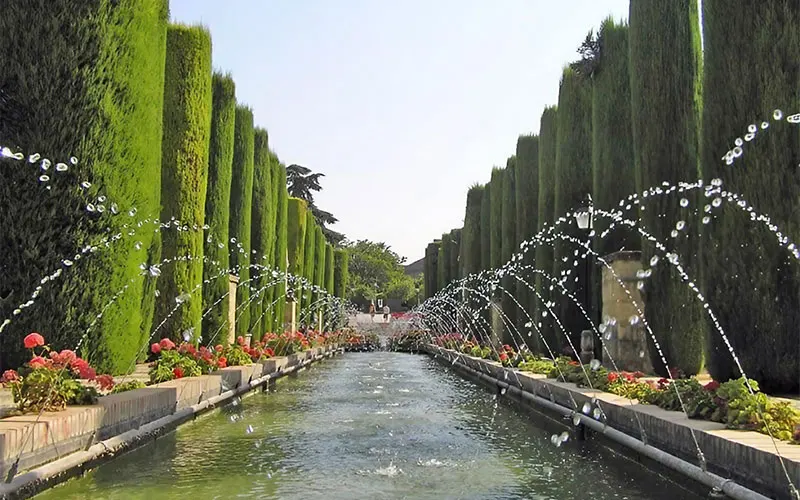
Palacio de Viana
At any time of the year, this graceful building set around a staggering 12 patios is a delight to behold. If you can juggle your dates to visit in spring, then you’re in for a double treat; flowers, plants, shrubs, hanging baskets and pot plants adorn the spaces. Majestic styles of architecture spanning five centuries give us glimpses of the grandeur of the Spanish Nobility, whilst the furniture and decoration inside the house teach us a great deal about how they lived. Each of the patios has a distinct atmosphere and as a collection they are a celebration of Andalucian culture and lifestyle.
Museo de Julio Romero de Torres
Famous for capturing the sensual allure of Andalucian women and their sultry, passionate temperaments, this collection of art by Julio Romero de Torres, housed in the former family home, makes for a memorable visit. It’s a real privilege to be able to glance through the lifeworks of this remarkable painter and as you pace the gallery spaces, the eyes of his models manifest all their depth, knowledge and understanding of the human spirit to the observer. His work beautifully captures the mystery of the Andalucian people, their legends, beliefs, hopes and dreams; an enchanting museum.
Synagogue
It may be small but it is beautiful and unique. After the expulsion of the Jews by the Catholic Monarchs in 1492, nearly all the synagogues in Spain were destroyed; thankfully this one remains. Dating back to 1315, this house of worship for the former Jewish community stands on Calle Judío or the Jewish Street. The Jews thrived in medieval Cordoba and their influence was far reaching. One of the celebrated personalities is the philosopher and doctor Maimonides, whose statue sits a little further down the street in a tiny square. Cordoba honoured its Jewish heritage with the restoration of this building in 1985. It is now a museum.
Day Trips
Medina Azahara
Just 13km west of Cordoba in the foothills of the Sierra Morena, lies this impressive vestige of the glorious days of Al-Andalus. Built by the Caliph Abd-ar-Rahman III as part palace, part administrative centre and part town, the site is split into three levels and falls ingeniously onto the valley below. There is an excellent museum that pertains to the size, beauty and extraordinary richness of this ancient citadel. We recommend visiting the museum first which helps fire the imagination needed to bring the ruins to life. Avoid going out in the middle of the day in the height of summer as there is no shade.
Address: Ctra. Palma del Río, k.m.5.5, Cordoba; 957 10 36 37
Flamenco
Where to See Authentic Flamenco in Cordoba
Tablao Bodegas Campos
The trilogy of Flamenco, dance, song and music can be enjoyed in this “temple” of the art form on Friday and Saturday evenings. Nine performers unravel the deeper essence of Flamenco Puro; what we call Duende. Catering to large groups, the intimacy is not lost; the staff protect the intimate atmosphere of the evening. You can pay for just the show and a drink or stay for dinner which is á la carte and happens once the performance has finished; much better than having servers milling around during the show. This establishment is serious about its Flamenco.
Address: Calle Lineros, 32, Cordoba; 957 49 75 00
Carmen Gastroflamenco
In an intimate space in the heart of the former Jewish quarter, this tablao stages pure flamenco with definite Arabic undertones for up to 70 spectators 6 days a week. The essence is up, close and personal. Artists of distinction, some with national prizes under their belts perform an intense programme that lasts 1 hour and 20 minutes. Dinner is not an option but you can order Iberian cold cuts to accompany your drink. The experience is unforgettable.
Address: Plazá Juda Levi 6 Bajo, 41003, Cordoba; 611 25 17 10
La Bulería
Housed in a 19th-century palace that once belonged to a bullfighter, this family run business delivers Flamenco that is stripped back and raw. It might be not be as polished a performance as other places but if you are looking for an authentic Flamenco experience, this might well be your place. Our advice: just go for a drink and see the show which starts at 10.30pm. The whole space can be hired for events or special dinners.
Address: Calle Pedro López, 3, 14002 Cordoba, Spain; 957 48 38 39
Posada del Potro
Cited in Don Quijote, this incredible building dating back to the 15th-century has undergone a respectful and striking restoration. Once a stable block and inn-style lodging, it now houses a multimedia exhibition and performance spaces that celebrate Flamenco culture both past and present. Shows are free and tend to fill early – so be sure to grab a seat. Check with the centre for performance dates as they vary with the seasons. There is one room that describes the history of Flamenco and traces all the difference styles or palos through history. It’s a fascinating summary of the art form and is free to visit.
Address: Plaza del Potro, Córdoba; 957 485 039
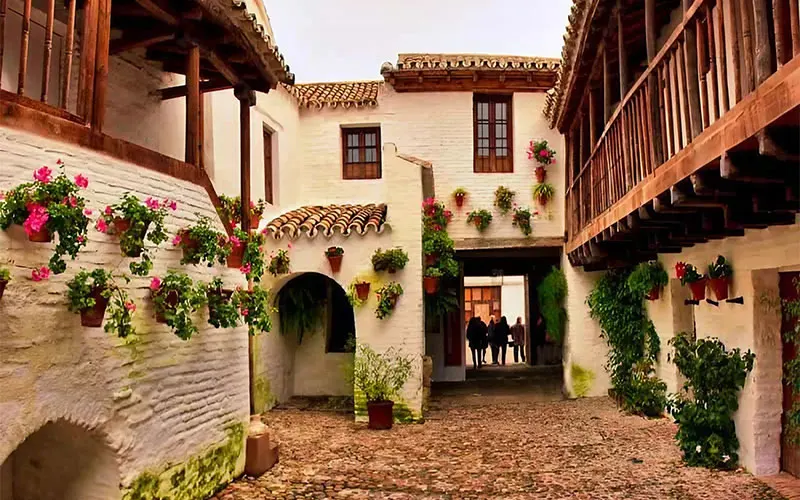
Practical Information
Where is Cordoba?
Cordoba is in the northern central part of Andalucia. It sits on the banks of the Gualalquivir River to the south of the Sierra Morena. It is capital of its province and has just over 300,000 inhabitants.
Getting There
- From Madrid: 3 hours on the A-4
- From Seville: 1 hour on the A-4
- From Malaga: 1 hour 30 minutes on the A-45
- From Valencia: 5 hours on the A-4 and A-43
- For bus information, go to: Estacionautobusescordoba.es; 957 40 40 40.
By train, Cordoba is superbly connected by high-speed rail links/ AVE:
- From Seville: 40 minutes
- From Malaga: 50 minutes
- From Madrid: 1 hour 40 minutes
- From Barcelona: 4 hours and 35 minutes
- For more information and ticket sales, go to: Renfe.com
When to Go & Climate
Cordoba suffers some of the highest temperatures in Europe. In July and August the highs can reach 46ºC; hence it is low season. Hotels are cheap, queues are non-existent but beware, between 2 and 6pm you will need to be having a siesta in your air-conditioned room! From December through to March, temperatures can be as low as 5ºC and rain is not uncommon.
The most pleasant time of year to visit is autumn and spring, with the latter being the busiest time of year due to the Patio Festival in May, which has been declared of International Interest and is now protected by UNESCO. For peak season, hotels need to be booked up early to avoid disappointment. We recommend staying in the city for at least two nights.
Cordoba Tourist Information
There are three tourist offices in Cordoba, but the main one is by the Roman bridge. Address: Plaza del Triunfo, 14003, Cordoba; 957 35 51 7; – Turismodecordoba.org
As Seen In


